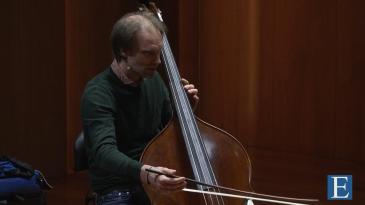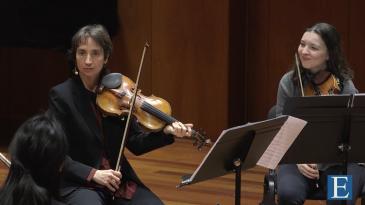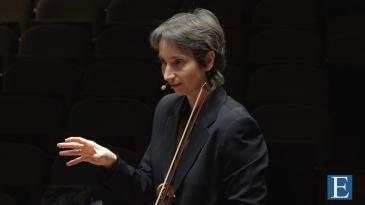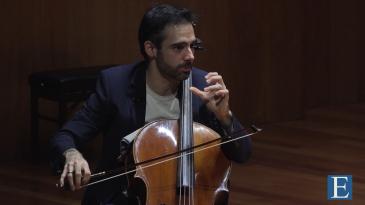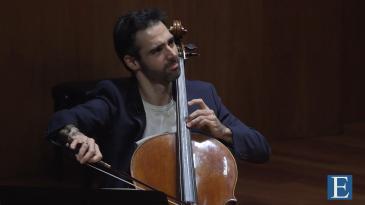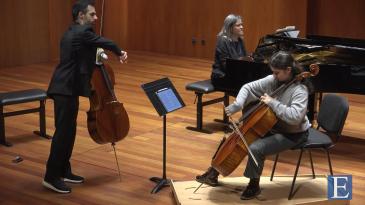The School
About the School
Who We Are
Our Headquarters
Sponsorship
Alumni
Information
Our Commitment
Social Impact Projects
Sustainability
Studies
Encounter of Santander
The School
About the School
Our Headquarters
Sponsorship
Information
Concerts
Our Commitment
Social Impact Projects
Studies
Encounter of Santander
Masterclasses
LISZT, Franz
Harmonies poétiques et religieuses for piano solo S 173
7. Funérailles
Eldar Nebolsin, professor
Balázs István Krápicz, student
First, Nebolsin asks the student about the funeral marches he knows. In general, the professor speaks about the tempo and character required for these types of marches. It is not necessary to show big lines (not 'alla breve' but in 4). In the 'lacrimosa' section, Nebolsin advises the student to take his time in a soothing character. Left and right hands are equally important, and Nebolsin gives some indications about sound balance between both hands and phrasing.
They also address the use of the pedal in different passages. Regarding the chromatic lines, they symbolize the 'passus duriusculus', the suffering before the last breath. Liszt creates the repetition of the same structure up and down to give a nostalgic and resignation feeling. Besides, in the F# part, the color should be more painful than in the f part.
Afterwards, they also work the staccato passage for the left hand. There is an harmonic explanation for melodic notes, and it is necessary to emphasize more the intervallic leap when it is after several chromatic intervals (by giving it more time).
Regarding a certain passage, Nebolsin compares it with the Dante Sonata: the notes need more vibrato and more time because it is like a recitative with a unique actor on the stage. Finally, they think about an arpeggio and Nebolsin makes some brief indications to the student about tempo and pedal.
Language: English
